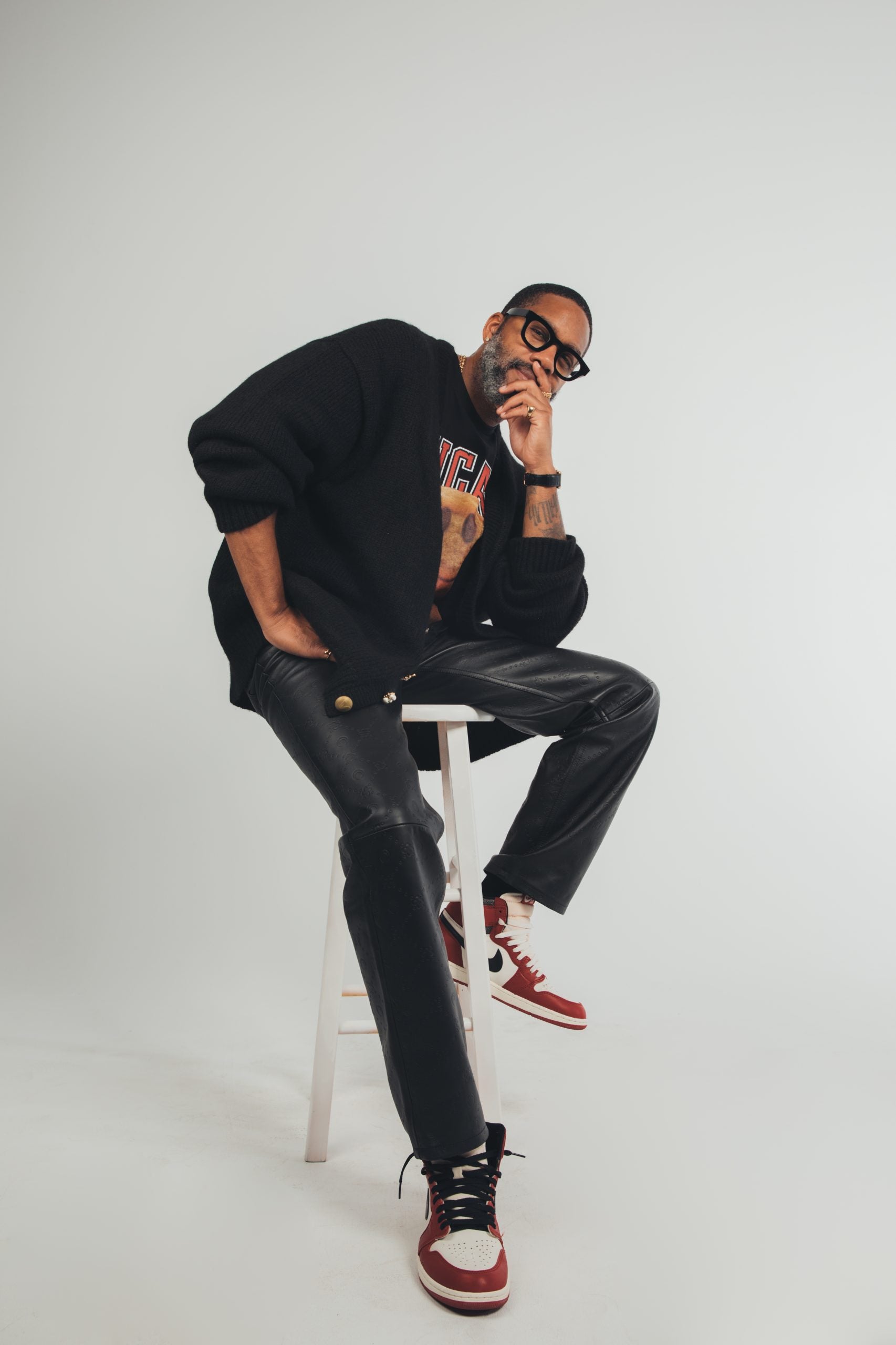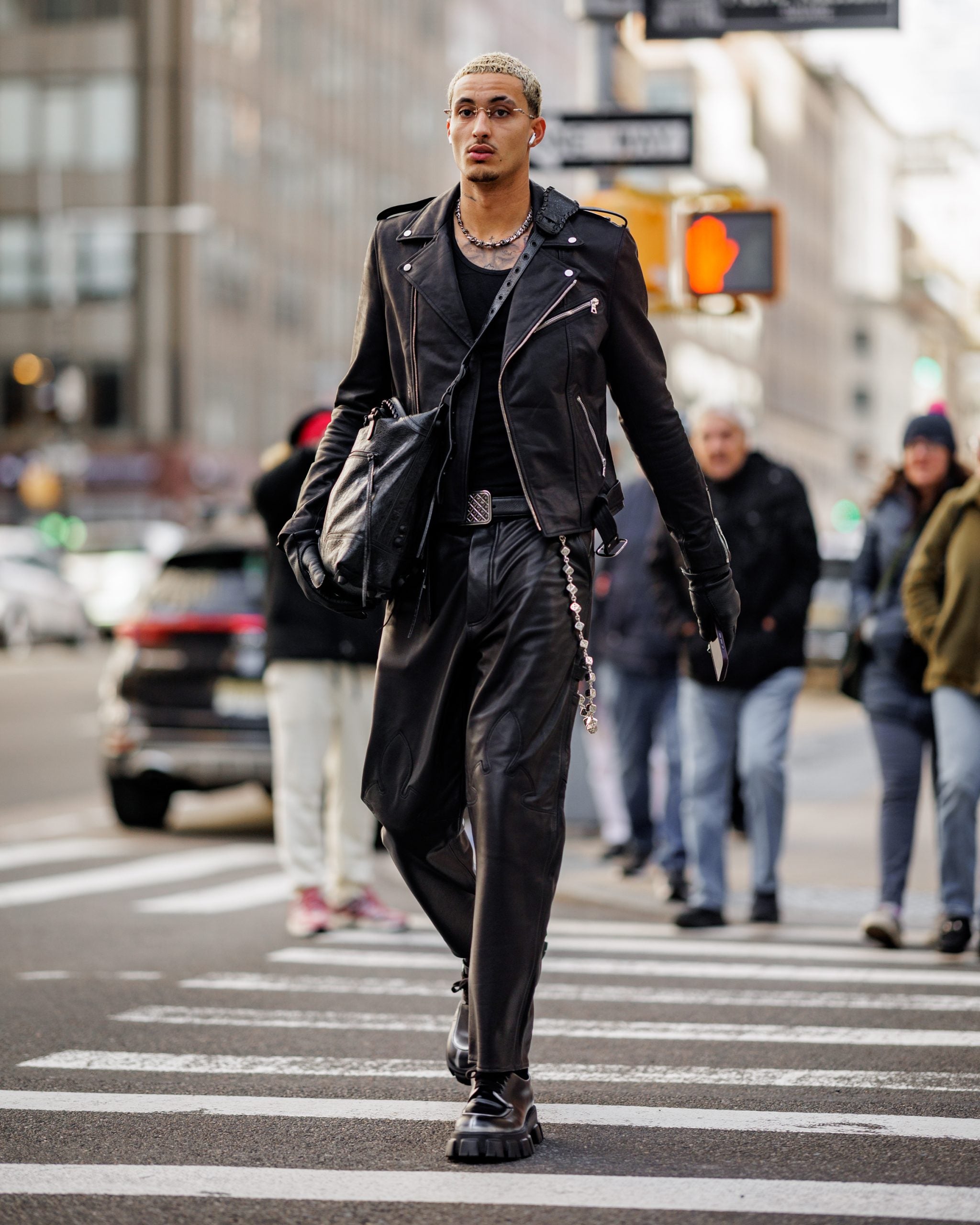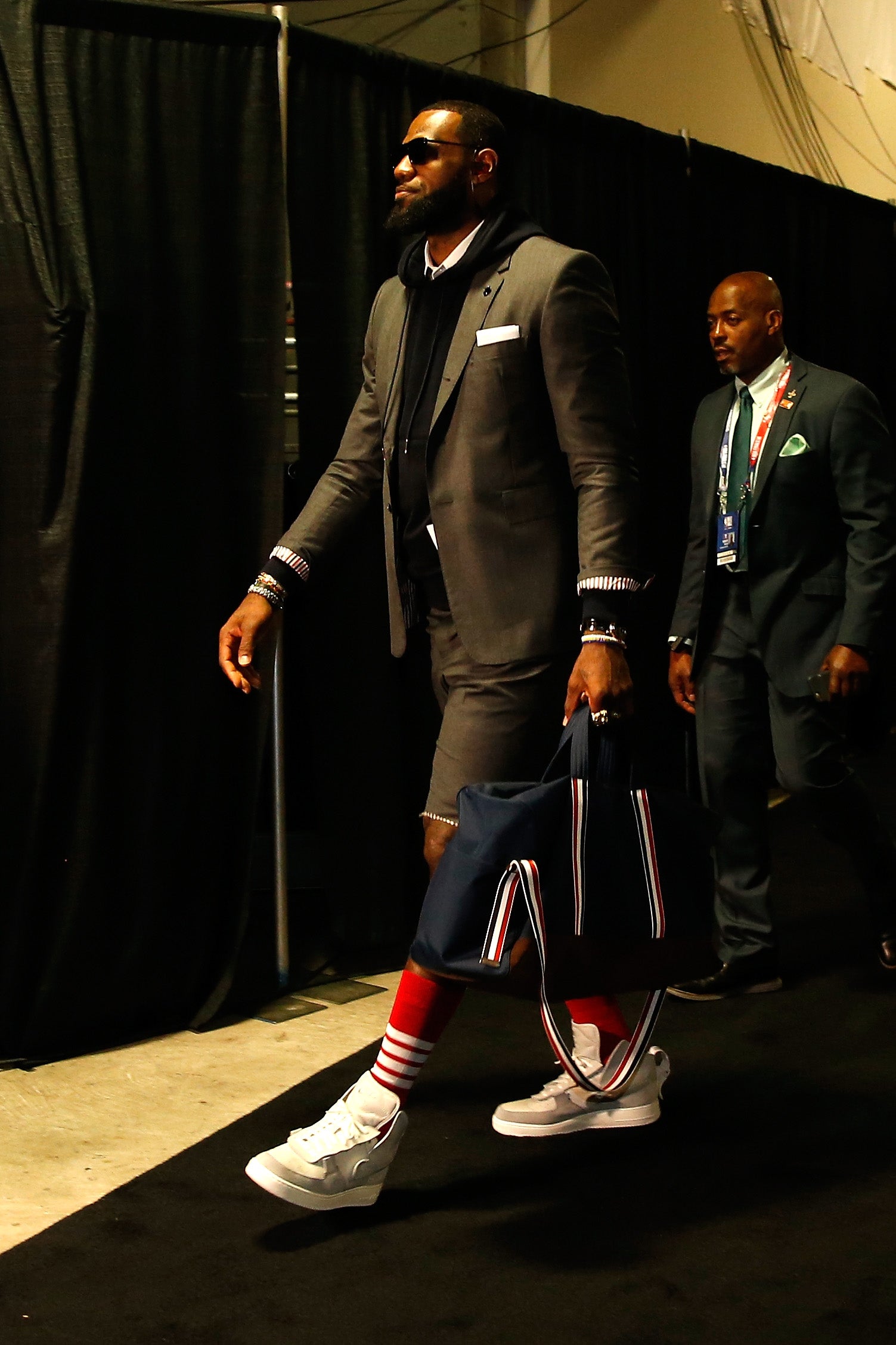
Mitchell Jackson has lived through multiple style eras. Through laughter over a Zoom call he tells me that he’s experimented with FUBU, had a cowboy era, and also once had a knack for Versace prints. Each of these distinct periods were a part of his life before he hit his forties. Now at 48, the Portland native and award-winning writer proudly wears pieces by Rick Owens, Balmain and Bottega Veneta. Jackson, who currently lives in Arizona explains that he uses fashion as a way to key in on what he feels is invigorating style-wise.
Jackson penned his debut novel, the critically acclaimed The Residue Years (2013) and the memoir Survival Math (2020). In 2020, he also wrote a moving profile which honored Ahmaud Arbury–it went on to win the Pulitzer Prize for feature writing. I found my way to his writing through the stellar New York Times magazine feature “Lonnie And Me.” The depth and intimacy that his writings bring forth is a breath of fresh air. And in comparison to his clothing choices, it aligns perfectly. All details are of the utmost importance, no stone is left unturned. His writing isn’t just impressive; it’s also deeply moving and almost as if you’re on a journey with him experiencing each word.
From his home in Arizona, he expresses that he believes his aesthetic principle is made up of how he’s unafraid to wear contrasting textures together. Slim-fitting trousers, laidback tees and eccentric outerwear selections are what his wardrobe is partially filled with. “I think that fashion, even though it is big business, that people who are actually fashionable, or stylish I would say, which is different to me, are cutting edge,” he says. Jackson enjoys experimenting with cuts and fits, he explains that he loves putting pieces together that might be off-putting. To me, it appears that fashion is something he enjoys just as much as writing.
His latest work, Fly: The Big Book Of Basketball Fashion, is a step into something that feels scholarly. It’s a dissection of the largest and most prevalent moments in basketball history regarding fashion. The writer explained that he had fun researching figures and significant fixtures that ended up in the book. “It ended up taking almost three years to write and research,” he said.
Jackson notes that he had fun splitting the history up by what was happening economically and also socially in the United States. This provided significant time stamps so that readers are able to further draw conclusions around what was happening in the nation amid the growth of the NBA.
“To me, the most fun era was the beginning of it. So, coming out of World War II, I really didn’t understand how many restrictions that they had in that era,” he said. “You could only have one suit and you could only have a certain amount of wool, and you could only have one pair of shoes, and there was a limitation on rubber.”
Fly traces through the NBA’s eras, and it ends up in the present. LeBron James, Dennis Rodman and countless others take up space in the compilation. Over 200 images are also in the book–this takes readers on an exploratory and visual journey alongside Jackson’s writings.
Since tunnel looks have skyrocketed into the fashion lexicon over the course of the past ten years or so, I ask Jackson what he thinks about them. He tells me that he is currently into the looks that the league’s stylish players like Shai Gilgeous-Alexander, Stefon Diggs, Odell Beckham Jr. wear ahead of games. He also isn’t remiss to note that Black women are stylists for many of these players.
“I think we’re getting really close to the apex of NBA fashion,” he says. Jackson notes that he feels the peak is swiftly approaching, and he can tell due to how the NBA is currently monetizing tunnel moments by investing in what the tunnel looks like. “For me, the fact that the NBA is putting that kind of emphasis on NBA fashion means that we’re well into this being co-opted by mass media and capitalism,” he notes.
“I think that if the NBA players want to continue to be stylish, or if they want to be stylish they’re going to have to predict where we’re going [with fashion],” Jackson adds.

We recently caught up with Mitchell Jackson to discuss his lifelong fascination with fashion, his thoughts on NBA tunnel outfits, and his latest offering Fly: The Big Book of Basketball Fashion.
ESSENCE: For those who aren’t familiar, what’s the best way for them to catch up with the writing you’ve been working on for years?
Mitchell Jackson: It depends on how much they want to read. My debut novel is really about my beginning, it’s autobiographical. I have an essay collection that gets into who I am, where I come from. I’m from Portland, Oregon. The novel is called, The Residue Years, and the essay collection is called, Survival Math. If you’re a book person, it would be them. Then if you’re not, I write a column for Esquire, so there’s a lot of short stuff there.
How would you describe your relationship with fashion?
I’ve been a lifelong admirer of fashion. I mean, going back as far as I can remember, I just was looking for Easter pictures and checking out my old Easter suits from when I was seven. Then I had a cowboy phase, which is very on-trend right now. I was wearing cowboy hats and big belt buckles and boots. But I would say I spent a lot of time in my adulthood trying to figure out [and] refine my style. I don’t think you can refine or develop your style without a sense of identity.
I think, like most people, I spent a lot of time trying to find out who I wanted to be in my twenties. So, you try a little of this, a little bit of that. I came back to cowboy for a minute in my early thirties, but it didn’t feel natural. Now, I think that I’ve settled on what my principal aesthetics are and why they matter to me. I am not a trendy person. I want to be able to make [a] visual presentation of myself in the same way I want to be able to compose a great sentence.
Can you talk to me about how fashion is tied to your identity?
I like contrasting fashion. If you look now I’m wearing three different chains, but they’re all different textures. This is an aesthetic principle that I use all the way through. I use it in my writing, I use it everywhere that I can think of that’s artful. I remember young guys dressing in suits and hard shoes, because they were aspiring to be a person. That’s knowing your identity and where you want to be. Or where you are. No knock on young guys my age, middle-aged guys who dress super young with the hat backward and the new [Nike] Dunks and whatever. But that just is not who I am now. I think your fashion should evolve with who you are, but I don’t ever think it should evolve and make you feel discomfort.
I like textures. Any kind of contrast you can form, whether it’s fit, a baggy shirt and slim pants or vice versa, or contrast like these three chains or wearing a certain kind of wool with leather. I like putting those two things together. I like the idea of it being driven by aesthetics, that I know that I’m putting these two things together because of this. Not just because it is trendy or not just because I like this brand, but because I think this and this looks [good] together. I keep talking about writing, but it is how I make sentences. I think that’s your best opportunity to do something that is most reflective of you, rather than following a blueprint.

Over the years fashion do you feel fashion has allowed you space to walk into numerous eras of your life as a Black man?
I went through lots of eras before settling on a palette, which is gray and black mostly. Then pop colors, a few of them, red, yellow, and some limes. Even the hairstyles. I went through my braids, I had an afro for a little while. But mostly I’m just going to have what they call in New York, a Dark Caesar.
Someone just sent me a picture, it had to be 1998, or maybe it was ’99. I had braids, I had a [bunch] of leather on, but I had braids and I had a little, you probably don’t remember these, but they were SkyPagers, they flipped open and they had a little keyboard, they were gray. They were the first smartphones, they used to call them. People would answer and take your message and dictate it to the phone. I have the leather, I’ve got the braids, which now I know will make me feel uncomfortable. I had the leather coat on. So, that was very representative.
When FUBU came out a few years later, they had Platinum FUBU, which was exorbitantly priced, FUBU with characters from [Fat Albert]. So, they took those cartoon characters and put them on the back, and they were charging, I think back then $300 for a jean jacket, which was crazy in the era of Bugle Boy jeans for $30. It was all super oversized. I went through an era of Platinum FUBU, and then I was into an era of European [brands]. I remember I had these Versace repeat print jeans. If you got me on a good night, I’m going to wear my white tee and my Versace print jeans.
How do you feel about the rise of tunnel looks in recent years in both the NBA and NFL?
I think it’s great. But I think we’re getting close to the apex of NBA fashion. I do think if we’re talking about NBA fashion, that [the Big Three is] probably the genesis of this current iteration because those were three star players in their prime on the most popular team in the league, who were all coming into their sense of fashion at the same time. I think that perfect storm of circumstances is what birthed it. Having LeBron James, Chris Bosh and Dwyane Wade on the same team in Miami on TV every week, that was really big. Then when LeBron left and went back to the Cavs, I think it infiltrated the league to where the lesser players were also being involved.
Like that year where he had all the Cavs dress up in Thom Browne. I think that was a really big moment. I almost worry about it now because I do think it’s at its apex and I want to see where it’s going to go because we now have the same guys being anointed. Well, they’ve already been anointed, but we have the same guys perennially, who are the fashion guys. So, you’ve got Shai, you got P.J. Tucker, you got LeBron, you got Jordan Clarkson, you got Kyle Kuzma. I think it’s tougher for them to have all of that four, five, six seasons when we were paying really a lot of attention to what they’ve been wearing. How does that evolve? I’m interested to see how it evolves, also because it feels like it’s been capitalized and monetized.

What are your thoughts on the Instagram pages that document tunnel looks?
I mean, I think the Instagram accounts might’ve influenced me to get them damn Rick Owens zipper pants that I spent too much money on and probably won’t wear again. So, I think they do serve their purpose. I really like the curatorial effect of those websites or those handles. I [also] like the commentary on a lot of them. NBA Fashion Fits and League Fits are my favorites. But also I go to Blitzfits, even though I’m not a big NFL fan.
Did Fly: The Big Book of Basketball Fashion allow you to take a scholarly approach to dissecting our athletes and their fixation on fashion over the years?
Yeah, definitely. To me, the most fun era was the beginning of it. So, coming out of World War II, I really didn’t understand how many restrictions that they had in that era. You could only have one suit and you could only have a certain amount of wool, and you could only have one pair of shoes, and there was a limitation on rubber. If you think about all those restrictions, that really dictated what people wore and how they wore it. It ain’t no seven, eight, nine Armani suits. No, you’ve got one good suit, dude, you’ve got to make this work. I think learning about that era. And also because I didn’t know much about that era of NBA. I knew about my era, from when I was born, I was born in ’75. When we get to the eighties, I have memories of that era, but I have no memories of the seventies.
I have no memories of the ‘60s and NBA fashion, except for brief clips. So, to go back and look at those clips, to look at those pictures of guys like Wilt Chamberlain, you mentioned, he was fly. He was the first fly big man, and very different from the guys he was playing with or against. Bill Russell was not fly. Bill Russell was like a regular, “I wear suits,” very conservative. So, it was really interesting to see that era of NBA fashion and then to connect it to, why would the players be looking like this in this moment in history? That was a real question. In every chapter, I think there’s six chapters. My question was, why are they doing this in this time period?
What is the most significant notion or lesson you walked away with after writing Fly?
I think, and maybe the most crucial one I learned was that fashion is never just in the choices that an individual makes. Yes, you get up and you look in your closet and you say, “I’m going to wear this and that,” but there were so many decisions that were outside of your control that went into what’s in your closet. Import, export, who can you import from? What are your economics? What are the price points of these brands? All of those things, culturally, economically, socially, are decisions that other people are making that give you choices to make. So, I think that was really important because that helped me think about how to arrange the book. These guys were not just wearing what they wanted to wear, they were wearing what was available to them at any given moment, and what they thought was socially acceptable. Which again, that’s being created by someone else.
So, I thought that’s really important. I do think that, at least in America, we don’t have fashion without Black folks. We are the center, the folk room of fashion. What’s cool is what’s fashionable, and what’s cool in this country is dictated by Black people. So, I think, and that’s in any league, which is probably why baseball ain’t that fly because you’ve got the fewest amount of Black folks in it.







